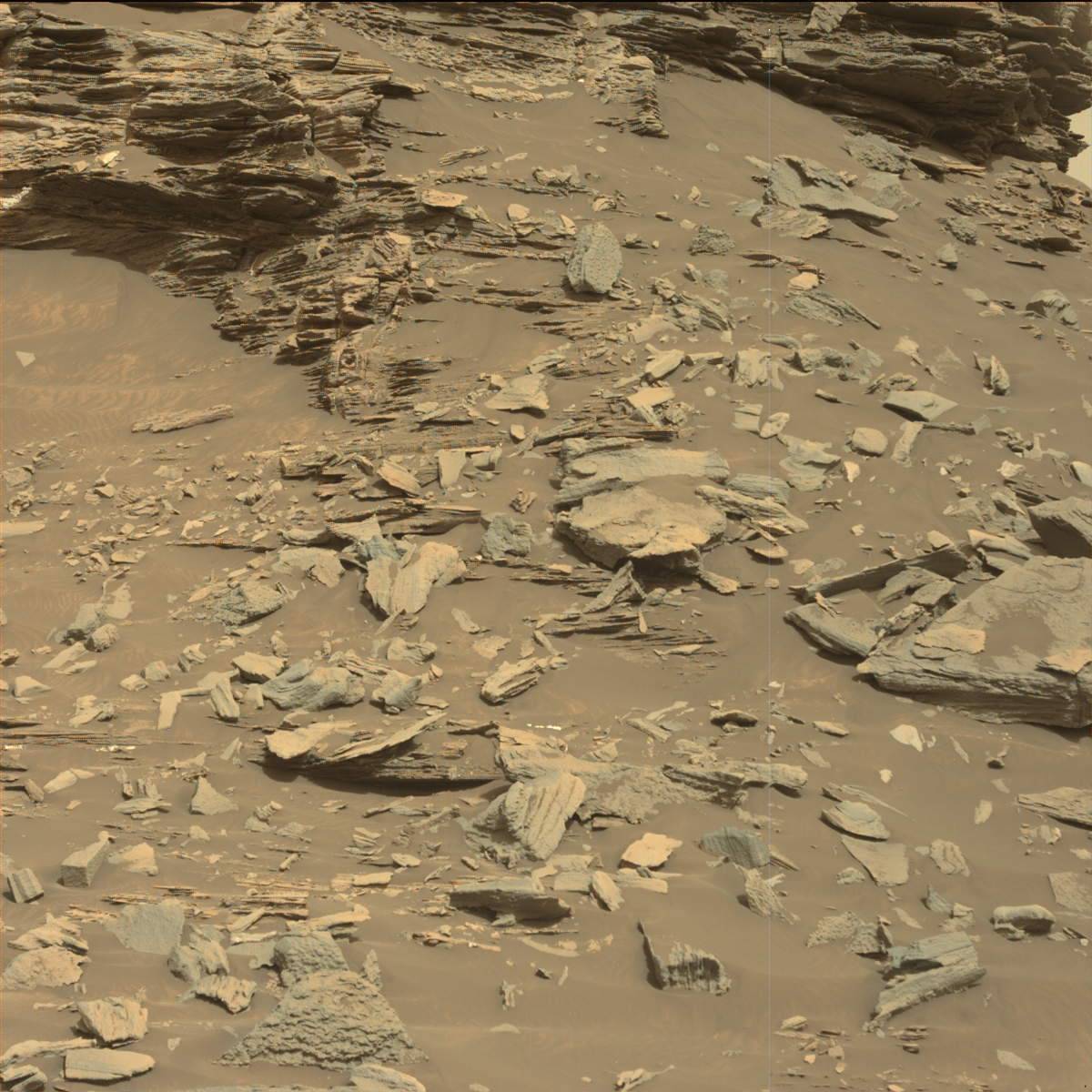 A Crumbling Layered Butte on Mars
A Crumbling Layered Butte on MarsExplanation: What is this unusual mound on Mars? NASA's Curiosity rover rolling across Mars has come across a group of these mounds that NASA has labelled Murray Buttes. Pictured is a recently assembled mosaic image of one of the last of the buttes passed by Curiosity on its way up Mt. Sharp -- but also one of the most visually spectacular. Ancient water-deposited layers in relatively dense -- but now dried-out and crumbling -- windblown sandstone tops the 15-meter tall structure. The rim of Gale crater is visible in the distance. Curiosity continues to accumulate clues about how Mars changed from a planet with areas wet and hospitable to microbial life to the dry, barren, rusted landscape seen today.
| << Previous APOD | This Day in APOD | Next APOD >> |

